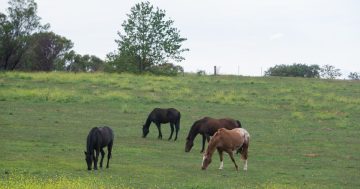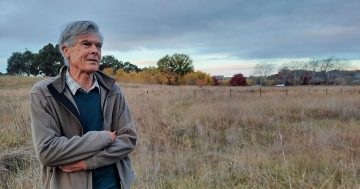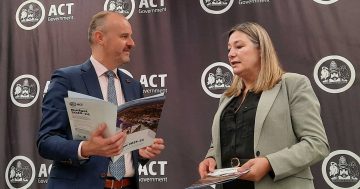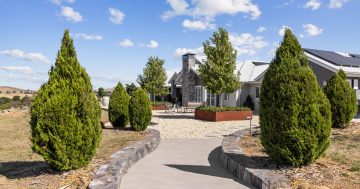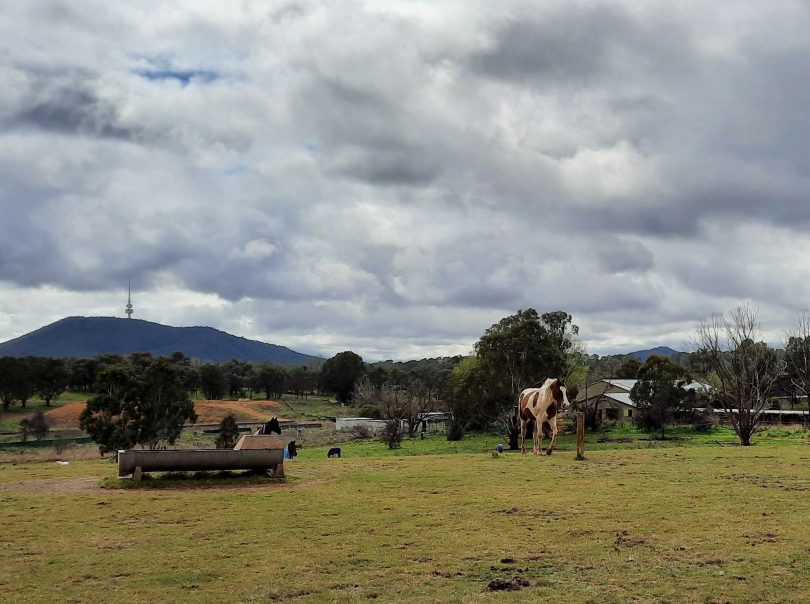
A section of the Yarralumla horse paddocks, only a short drive from Civic. Photos: Ian Bushnell.
Aged care provider LDK’s proposal for a $143 million residential village and care centre on the old motel site off the Cotter Road may have ramifications for the neighbouring horse paddocks.
LDK plans 55 villas and 261 units across four to five-storey buildings clustered around amenities and care services.
If approved, it will mean a massive change to the rural landscape and green buffer between the inner south and Weston Creek.
The more than 100 hectares of space on both sides of the Cotter Road’s long-established agistment paddocks has always provided a welcome break in the city’s urban development between the inner south and Weston Creek.
Canberra’s growth has already started to impinge on that sense of rural relief. The Cotter Road used to be a single lane link to the west reminiscent of a country lane but is now a dual carriageway that fills every day with new commuters from the Molonglo Valley.
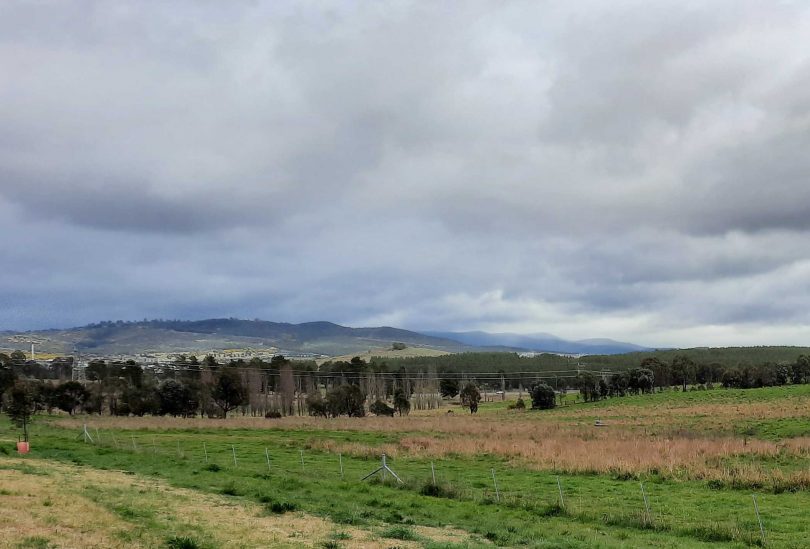
The wide-open spaces of the Yarralumla horse paddocks looking down to the Tuggeranong Parkway and beyond to the new suburbs of the Molonglo Valley.
As they drive past the horse paddocks on either side, many commuters must wonder how long can they last.
The deal between the ACT Government and the NCA on the North Curtin Horse Paddocks means eventually, between the proposed diplomatic estate and development of the remaining Territory land on the light rail corridor, that stretch of rural landscape will be no more.
This is basically a function of a growing city and the land use pressures that brings, no matter whether one thinks it is a good thing or not.
The government planning strategy favours infill over greenfield development in a bid to contain urban sprawl and conserve habitat, but the demand for standalone houses is insatiable and in the current market is feeding record prices.
That is a social and, inevitably, a political problem, and supply is about the only lever left.
The government is also understandably hesitant about building too many new suburbs because it can be very expensive and comes with service problems such as extending public transport and building new schools.
When it comes to building a compact city, it will be difficult to ignore the wide-open spaces so conveniently close to the city that a relatively small group of people uses.
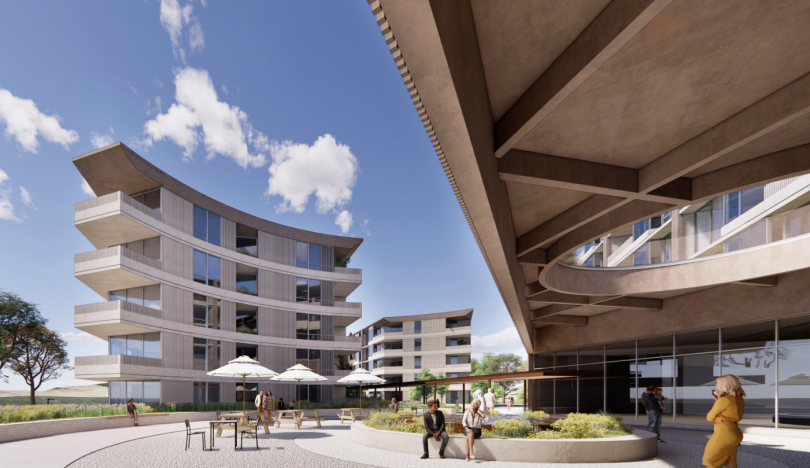
An artist’s impression of the proposed LDK development. Image: Rothelowman.
Such a big residential development next to those open spaces will only increase the speculation about whether agistment is the best use of that land while people are being forced to buy apartments instead of the family home, or even townhouse, they would prefer because there are so few they can afford.
Not to mention those who are being locked out of the market altogether.
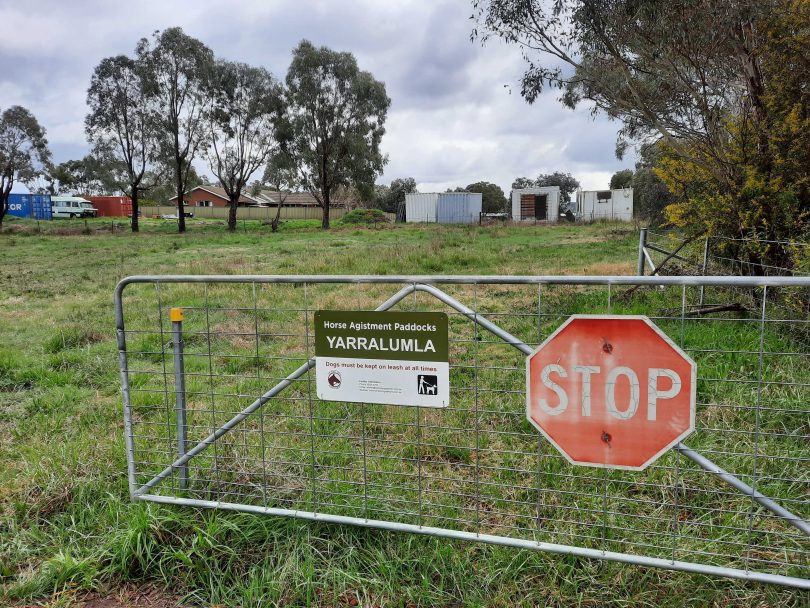
The entry to the horse paddocks next to the LDK site.
The LDK site is designated national land, as is the neighbouring 40-hectare Yarralumla horse paddocks, something that might save them in the short term from development. Across the Cotter Road is the 80-hectare Illoura paddocks, which is ACT land.
It could be argued that there are options for the land other than housing that retain a rural use, such as market gardens or the creation of a green recreational buffer.
But at present, there does not appear to be even a conversation about the future of the land.
The Curtin deal devastated the city’s equestrian community, and any more loss of trails and agistment would be met with fierce resistance.
But governments of any persuasion will surely be asking the same questions as the motorists who speed past on the Cotter Road: how long can they last?












